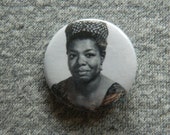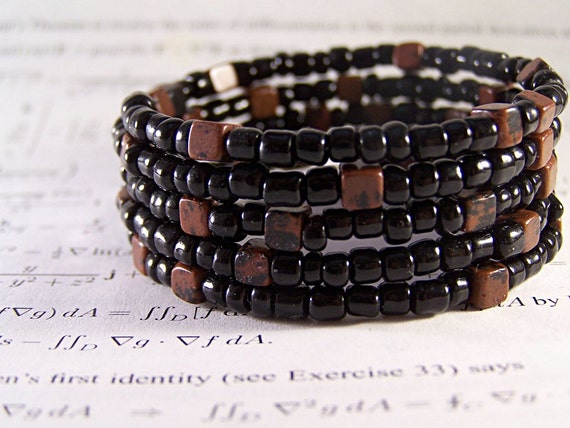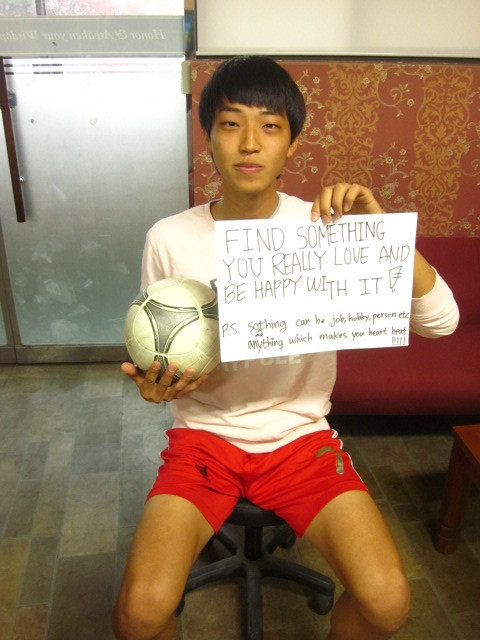No, this isn't an itemized list of jewelry design problems I have that totals eight; this is one rant about why I hate the number eight.
I've never cared much for the number, to be honest, despite its prominence in my birth date (28) and the fact that it factors into my favorite number (24). Something about just bugs me out; maybe I had problems with my eights time tables as a kid, I don't know. But after I got into making jewelry, my distaste only got worse.
As has been well-established by now, numbers are critical in my jewelry. If I'm making, say, a Golden Ratio necklace (1.618033...) a portion of my design needs to be designed with eight "units" in mind. So far, so good.
When I'm using just one kind of bead, this is no problem. There's no variation I need to account for or anything that might inadvertently offend my sense of balance or symmetry.
The number is spelled out with uniform (more or less) black Czech glass beads. There's no patterning I need to worry about. All I have to do is count.
When I want to work with a variation size, color, or both, that's when shit gets cray. (That's what the kids say these days, by the way."Cray." "Craycray.")
You see, I'm a big fan of symmetry. When I was small, my dad and I had a good-bye ritual (which we still do today when I leave for long trips): "Rub noses, touch heads, kiss, hug, and the other side." "The other side" being a hug on the other side, which I had insisted we had because otherwise I felt wrong. While I think my parents were disappointed that I didn't grow up to be an engineer, I think they were also glad that I didn't turn out to have crippling OCD. (For the record, this was so far back I don't even remember making this request; I thought the ritual had always been "...on the other side.")
I feel that same wrong when things aren't symmetrical. Remember that trend of one-shouldered "Wilma tops"? Yeah, that was a bad time for me. And out of all the symmetries, the most important symmetry is probably mirror symmetry.
This wouldn't be so bad if I weren't also obsessed with pseudo-randomness. In other words: I hate it when I have to repeat something in a pattern, like two beads of the same color or size right next to each other. With these two very strong inherent tendencies (a preference for pseudo-randomness and mirror symmetry), trying to work a pattern based on two or three units into eight is an ugly, ugly hack.
Odd numbers are the easiest, obviously, especially with two different units. The "odd one out" in the middle splits the series of beads evenly in two (I imagine the axis of symmetry as being in the middle of the middle bead, bifurcating it). For example, with the number five, you get:
X O X O X
Which is just X O > mirrored. (Or a better illustration: >< O >< O >< is just >< O > mirrored.)
That leaves the even numbers from 1 - 9. Two I simply use two of the same beads:
XX
I don't normally like two of the same beads next to each other like that, but once in a while it's okay. Especially with two, because it's so small, it's not enough to make me bonkers.
With four, I often just sandwich two like ones inside their opposites. This one I like better than two, because there will be variation on either side of the beads in the middle.
X O O X
At six, I simply string it as two consecutive groups of threes:
X O X X O X
Again, the two consecutive beads would normally bug me, but the presence of the alternating beads on either side makes it palatable. I also like the number six a lot*, so I'm inclined to be generous if it makes life difficult for me.
And now comes eight. You can't imitate six and have two groups of four:
X O O X X O O X
That is too many consecutive doubles. It looks ugly and I don't like it. What to do, what to do? For a while I went the "out of balance" route with:
X O X O X O X O
That still made me cringe every time I looked at it, though it was better than X O O X X O O X. So I kept it.
Believe it or not, it took me a while to come up with this fairly obvious solution:
X O X O O X O X
When I finally did, I was able to make peace with eight, or at least not hate it so much. I still sigh a little every time I see it come up, though. You damn dirty eight.
*It is rather bizarre how much I love 6—a numeral written without ANY symmetry— but loathe 8—a numeral written with mirror symmetry in spades. I'm not sure how to account for it except that six is divisible by three and eight is not. To go Inception on this number preference ("We have to go deeper!") maybe my affinity for 3 and its multiples have something to do with three being the first time you can iterate mirror symmetry with two different units.
Wednesday, March 20, 2013
Monday, March 18, 2013
Music Monday: The Garden of Your Mind
I'm sure I've posted this already, but I was reading a great Cracked article about Mr. Rogers and came to think of this.
What a wonderful man.
There are some people in the world whose relentless positivity I can't stomach, as it seems like an act or a facade or just plain stupid. Yet every video I've seen of Fred Rogers and everything I've read about him bespeaks an earnest and intelligent optimism. If I'm cruising channels and Mr. Rogers' Neighborhood is on PBS, I will watch the rest of the episode. Having a bad day? Watching a clip on YouTube will cheer you up. As McGinley points out:
Thank you for being you, Mr. Rogers.
What a wonderful man.
There are some people in the world whose relentless positivity I can't stomach, as it seems like an act or a facade or just plain stupid. Yet every video I've seen of Fred Rogers and everything I've read about him bespeaks an earnest and intelligent optimism. If I'm cruising channels and Mr. Rogers' Neighborhood is on PBS, I will watch the rest of the episode. Having a bad day? Watching a clip on YouTube will cheer you up. As McGinley points out:
He didn't live in a world full of songs and puppets. He brought songs and puppets to a world that was scared and tired and vulnerable.
Thank you for being you, Mr. Rogers.
Sunday, March 17, 2013
101 in 1001
Erin go Braugh! Hope everyone's enjoying their corned beef and green beer!
Completed:
I listed a new item on Etsy every day for two weeks! (10 - 11)
In Progress:
I took some time out to contribute to my stock for the upcoming Springtown craft fair (this Saturday!). (2 - 13)
I even made it holiday appropriate and added some green in:
Two are Avogadro's number; one is the mass of an electron. These are all chokers, from 16 to 17 inches in length. These beads were all salvaged from some broken jewelry I inherited from a friend. I guess you could say that makes it green in more ways than one, but then I'd have to punch you in the face.
Originally all of the green beads (clay and what seems to be acrylic) were one single strand necklace, while all of the faux pearls were in a multi-strand necklace. Out of that chaos I managed to get three chokers plus a bracelet.
I also finished a couple prototypes of a brand new design that turned out really well. I want to crank out a few more tomorrow, so maybe I'll have the foresight to snap a few pictures with my phone while I'm taking a break.
Comments and posts, as usual. (1 - 3) (7 - 4)
Failed:
None!
Rest of the list after the jump.
Friday, March 15, 2013
Creative Despair
 I was originally going to title this "Creative Fatigue," but that's not quite what I'm going after. I'm not burned out on any of my creative hobbies; if anything, I have more ideas now than I've had in a long time.
I was originally going to title this "Creative Fatigue," but that's not quite what I'm going after. I'm not burned out on any of my creative hobbies; if anything, I have more ideas now than I've had in a long time.My grandmother commissioned me to make a necklace for her best friend, a woman who has always been our "Aunt Doris" despite not actually being family. I set to making it right away, and while I was working, thought, "What will happen to this after Aunt Doris dies?"
I'm not normally a morbid person; far from it. Nor do I have anything against Aunt Doris or wish to see her shuffle off this mortal coil sooner rather than later. But the issue of stuff has been weighing heavily on my mind recently, as I'm due to make a trans-Atlantic move this fall. I have stress dreams about suddenly losing or having to get rid of my stuff, then I wake up feeling panicked and not at all well-rested.
As I watch the jewelry I make pile up, I think about all of the stuff I'm contributing to the world. I'm contributing, and so is every other Etsy seller out there. I think about my Transcendental American heroes, Thoreau and Emerson: "Simplify, simplify, simplify!" I think about Buddhist teachings about non-attachment. I think about I am going to do with all the stuff I have that might never find a new home. By contributing to other people's stuff am I violating my own moral code?
I think about the Earth becoming terrible and inhospitable before we have a chance to get off it and try again on Mars. I think about the Sun going red giant before we get a chance to get out of this solar system. I think about the eventual heat death of the universe. What, really, does making all my little trinkets and baubles matter, in that scheme of things?
I'm sure every creative person must have this experience at one point or another. Thoughtful people think about these things, and creativity requires some measure of thoughtfulness.
I don't have a good answer. The best I can come up with is that creating makes me happy. It keeps me thinking, it keeps me engaged in life, it keeps me sharp. If other people enjoy what I create, so much the better. Ultimately, though, it's for me. It's a selfish answer, to be sure, but it's the best one I have at the moment.
From Korean Students Speak, the rare tumblr that I actually follow:
"Find something you really love and be happy with it!
P.S. Something can be job, hobby, person, etc.
anything which makes your heart beat!!!!!!
"Find something you really love and be happy with it!
P.S. Something can be job, hobby, person, etc.
anything which makes your heart beat!!!!!!
Thursday, March 14, 2013
Happy Pi Day!
While not as personally significant for me as tau day, pi day is still pretty great! Here's a round-up of all the cool pi stuff I've seen today.
First, one of my pi cuffs was featured in a lovely pi treasury by Miriam of Schulman art. She found loads of cool pi goodies, so don't miss it!
My friend Nancy over at Kaleidoglass also shared this AWESOME table on her Facebook. AWESOME.
Yes, it's a pi table! I'm not entirely sure how to puzzle out the whole thing, but 3.141 is easy enough to see. This is funky and gorgeous and I would have it in my own house, even though it costs upwards of $3000. (Sadly, it doesn't cost $3141.59, which would be appropriate, wouldn't it?)
Even Oreo is into the pi spirit!
First, one of my pi cuffs was featured in a lovely pi treasury by Miriam of Schulman art. She found loads of cool pi goodies, so don't miss it!
My friend Nancy over at Kaleidoglass also shared this AWESOME table on her Facebook. AWESOME.
Yes, it's a pi table! I'm not entirely sure how to puzzle out the whole thing, but 3.141 is easy enough to see. This is funky and gorgeous and I would have it in my own house, even though it costs upwards of $3000. (Sadly, it doesn't cost $3141.59, which would be appropriate, wouldn't it?)
Even Oreo is into the pi spirit!
Or, for the more health-conscious, this chocolate tofu pi(e) recipe from Mori-nu tofu.
What better greeting to send to a long-distance math lover than a pi card? A steampunk pi card?
Or use it to leverage your beverage.
Happy pi day to all, and to all a good night!
Monday, March 11, 2013
Music Monday: So Long And Thanks For All The Fish
Happy birthday, Douglas Adams.
Sunday, March 10, 2013
101 in 1001
Completed:
None!
In Progress:
Comments and posts, as usual. (1 - 3) (7 - 4)
I also started watching an incredibly long BBC documentary series called Connections. (9 - 5) (9 - 6) It's a little bit dated, but very interesting! And also in 10 different parts that are 45 minutes long each.
I also dusted off my outlined screenplay and added a few pages. (5 - 8)
Failed:
None!
Rest of the list after the jump.
Saturday, March 9, 2013
Science Saturday: Americans are WEIRD
This story came to me by way of a friend I left behind in Korea: "A slap in the face to evolutionary psychologists," is the context he provided. And I will gladly read anything that can credibly debunk evopsych because many in the field practice and perpetuate bad science.
For the link phobic, an anthropologist went to a relatively isolated tribe in Peru and ran a bunch of game theory experiments with them. These were experiments had been performed time and time again, with consistent and universalized results.
Until Henrich played some games with Machiguengas in Peru:
Americans are WEIRD; that is to say they are Western, Educated, Industrialized, Rich, and Democratic. It goes without saying that these characteristics are not inherent in all of the world's cultures. Assuming that because you've got consistent results from running an experiment thousands of Americans you've found some grand evolutionary truth about our brains, cognition, or temperaments is a huge mistake. A truly freaky example:
This one is considered a classic illusion, right? Even though most of you know better, you'll still perceive B as being longer than A. Yet what seems to be an issue of pure cognition and perception is actually a factor of culture, living spaces, and environment.
Perhaps, in time, this hypothesis about whence the difference arises will be debunked and a better one put in its place. But it's still a hypothesis about a demonstrable, testable, replicable difference in something once thought to be a universal perception.
So the next time you hear someone talk about how "humans/men/women have been shown to do X, Y, or Z," ask if the studies included people who aren't WEIRD. It might just make all the difference. How much? This story about the Karbi and the Khasi tribes in India just about sums it up.
Look at what a huge difference a little culture makes.
*I loathe division by hemisphere but as a linguistic shortcut it's sometimes the easiest way to demarcate things.
For the link phobic, an anthropologist went to a relatively isolated tribe in Peru and ran a bunch of game theory experiments with them. These were experiments had been performed time and time again, with consistent and universalized results.
Until Henrich played some games with Machiguengas in Peru:
As it turns out, many experiments in psychology thought to be good science turned out to be using an incredibly small sample size: Westerners*. Just how small of a sample size is that?The test that Henrich introduced to the Machiguenga was called the ultimatum game. The rules are simple: in each game there are two players who remain anonymous to each other. The first player is given an amount of money, say $100, and told that he has to offer some of the cash, in an amount of his choosing, to the other subject. The second player can accept or refuse the split. But there’s a hitch: players know that if the recipient refuses the offer, both leave empty-handed. North Americans, who are the most common subjects for such experiments, usually offer a 50-50 split when on the giving end. When on the receiving end, they show an eagerness to punish the other player for uneven splits at their own expense. In short, Americans show the tendency to be equitable with strangers—and to punish those who are not.Among the Machiguenga, word quickly spread of the young, square-jawed visitor from America giving away money. The stakes Henrich used in the game with the Machiguenga were not insubstantial—roughly equivalent to the few days’ wages they sometimes earned from episodic work with logging or oil companies. So Henrich had no problem finding volunteers. What he had great difficulty with, however, was explaining the rules, as the game struck the Machiguenga as deeply odd.When he began to run the game it became immediately clear that Machiguengan behavior was dramatically different from that of the average North American. To begin with, the offers from the first player were much lower. In addition, when on the receiving end of the game, the Machiguenga rarely refused even the lowest possible amount. “It just seemed ridiculous to the Machiguenga that you would reject an offer of free money,” says Henrich. “They just didn't understand why anyone would sacrifice money to punish someone who had the good luck of getting to play the other role in the game.”
A 2008 survey of the top six psychology journals dramatically shows how common that assumption was: more than 96 percent of the subjects tested in psychological studies from 2003 to 2007 were Westerners—with nearly 70 percent from the United States alone. Put another way: 96 percent of human subjects in these studies came from countries that represent only 12 percent of the world’s population.
Americans are WEIRD; that is to say they are Western, Educated, Industrialized, Rich, and Democratic. It goes without saying that these characteristics are not inherent in all of the world's cultures. Assuming that because you've got consistent results from running an experiment thousands of Americans you've found some grand evolutionary truth about our brains, cognition, or temperaments is a huge mistake. A truly freaky example:
This one is considered a classic illusion, right? Even though most of you know better, you'll still perceive B as being longer than A. Yet what seems to be an issue of pure cognition and perception is actually a factor of culture, living spaces, and environment.
Why?Researchers found that Americans perceive the line with the ends feathered outward (B) as being longer than the line with the arrow tips (A). San foragers of the Kalahari, on the other hand, were more likely to see the lines as they are: equal in length. Subjects from more than a dozen cultures were tested, and Americans were at the far end of the distribution—seeing the illusion more dramatically than all others.
For instance, the different ways people perceive the Müller-Lyer illusion likely reflects lifetimes spent in different physical environments. American children, for the most part, grow up in box-shaped rooms of varying dimensions. Surrounded by carpentered corners, visual perception adapts to this strange new environment (strange and new in terms of human history, that is) by learning to perceive converging lines in three dimensions.
When unconsciously translated in three dimensions, the line with the outward-feathered ends (C) appears farther away and the brain therefore judges it to be longer. The more time one spends in natural environments, where there are no carpentered corners, the less one sees the illusion.
Perhaps, in time, this hypothesis about whence the difference arises will be debunked and a better one put in its place. But it's still a hypothesis about a demonstrable, testable, replicable difference in something once thought to be a universal perception.
So the next time you hear someone talk about how "humans/men/women have been shown to do X, Y, or Z," ask if the studies included people who aren't WEIRD. It might just make all the difference. How much? This story about the Karbi and the Khasi tribes in India just about sums it up.
This difference in spatial reasoning is cited time and time again as reasons why there aren't more women in STEM. "It's biological," people like to say, "it's just because men and women are wired differently." Similar "biological," evopsychological reasons come up time and time again to explain this or that difference: women aren't naturally promiscuous, women are naturally inclined towards motherhood, etc etc.Across both tribes and genders, people took about 40 seconds, on average, to complete the puzzle. In the patrilineal Karbi tribe, men completed the puzzle 36 percent faster than women. But in the matrilineal Khasi tribe, women and men were equally good at their task.
What that shows, Hoffman said, is that "even while holding biology constant, there is an effect of culture on the gender differences in spatial abilities."
Look at what a huge difference a little culture makes.
*I loathe division by hemisphere but as a linguistic shortcut it's sometimes the easiest way to demarcate things.
Friday, March 8, 2013
Feminist Friday: International Women's Day!
'International Women's Day'
Happy International Women's Day! This treasury celebrates the accomplishments of some astounding women; it also features work from awesome lady Etsyans! Women featured in this treasury include:- Rosa Parks
- Sally Ride
- Frida Kahlo
- Harriet Tubman
- Adele
- Janis Joplin
- Rosalind Franklin
- Ada Lovelace
- Mata Hari
- Charlotte Brontë
- Maya Angelou
Why not celebrate by taking a moment to Google one of these famous ladies and learning more about her life and accomplishments?

$350
| 
$15
| 
$30
| 
$14
|

$75
| 
$10
| 
$52
| 
$12
|

$30
| 
$18
| 
$34
| 
$9.99
|

$55
| 
$12
| 
$40
| 
$1.6
|
Treasury tool supported by the dog house
Wednesday, March 6, 2013
What I'm Reading: Jane Eyre
Wuthering Heights nearly spoiled the Brontë sisters for me forever. I decided to give Jane Eyre a try because Jane seems like a way more interesting and capable person than Catherine, plus it was free to download on my Amazon Kindle app.
I used to be staunchly opposed to e-readers. I still kind of am, as nothing will ever be as enjoyable (to me) as a proper library of books, or the smell of fresh ink, or how the paper feels under your fingers as you turn the page, but having the Kindle app on my phone makes going out in public so much easier! Forgot a book? Dim lighting? Never fear, just pull out your phone! It's the perfect "so you're alone at a bar" app, and probably better for your brain than Angry Birds.
Jane Eyre, of course, is turning out to be an enjoyable read, but I am not a fan of reviewing "the classics," because what more needs to be said? All I can say is, I'm glad I got around to this one.
I used to be staunchly opposed to e-readers. I still kind of am, as nothing will ever be as enjoyable (to me) as a proper library of books, or the smell of fresh ink, or how the paper feels under your fingers as you turn the page, but having the Kindle app on my phone makes going out in public so much easier! Forgot a book? Dim lighting? Never fear, just pull out your phone! It's the perfect "so you're alone at a bar" app, and probably better for your brain than Angry Birds.
Jane Eyre, of course, is turning out to be an enjoyable read, but I am not a fan of reviewing "the classics," because what more needs to be said? All I can say is, I'm glad I got around to this one.
Monday, March 4, 2013
Music Monday: Douglas Kim
Courtesy of my friend Dromeda, this Music Monday has everything I love: Ben Folds, humor, and discussions on race.
Sunday, March 3, 2013
101 in 1001
Completed:
While I've probably done this before, I realized I blogged a steady schedule of M-W-F last week. (10 - 6)
In Progress:
Comments and posts, but otherwise nothing. (1 - 3) (7 - 4) I need to start reading again!
Failed:
None!
Rest of the list after the jump.
Saturday, March 2, 2013
Science Saturday: Gem Detectives
Using science to trace precious gems. Naturally, I think this is awesome. While the article focuses mostly on protecting consumers, I have high hopes for how it will protect sources—make it easier for mines and sources that are human rights travesties or massive environmental concerns to be locked out of the market until their issues have been resolved.
Friday, March 1, 2013
Foodie Friday: The Perfect Cookie
Since Christmas, I have been on a quest to find the ultimate chocolate chip cookie recipe. Everyone has different preferences when it comes to the basic chocolate chip; my favorite style is the chewy, savory kind. I've experimented with about a half dozen recipes to accomplish this, as well as solicited help from the vast hivemind of the Internet, all for naught. This week, I definitely made huge strides in the right direction. The cookies I made turned out to be (in my humble opinion) perfection.
I went back to the basics with my tried-and-true Arm & Hammer recipe. It's one I'm familiar with, so it's a good one for experimentation. As per the suggestion of my friend Jessie, I upped the ratio of brown sugar to white sugar. I also baked it at a slightly lower temperature for a slightly longer period of time.
Of course, since this experiment tweaked two variables, I'll have to make another batch later to see which of those two had the most effect. Baking for science!
I went back to the basics with my tried-and-true Arm & Hammer recipe. It's one I'm familiar with, so it's a good one for experimentation. As per the suggestion of my friend Jessie, I upped the ratio of brown sugar to white sugar. I also baked it at a slightly lower temperature for a slightly longer period of time.
Of course, since this experiment tweaked two variables, I'll have to make another batch later to see which of those two had the most effect. Baking for science!
Subscribe to:
Posts (Atom)











